Did you ever wonder how elevators move up and down? They use pulleys! A pulley is a simple machine, made from nothing more than a rope and a wheel. By looping the rope over the wheel, you can use a pulley to change the direction of a force. (The loop of rope on a flagpole is a simple example of a pulley.) But if you have several pulleys working together, they act as a force amplifier — or in other words, they make it easier to lift heavy things. In this project, you’ll be learning about pulley systems and how they work using Ziploc® brand sandwich bags!
Learn More:
The mechanical advantage of a machine (like this one!) is a measure of how much easier the machine makes it to do something — in this case, lifting marbles. In a perfect world, this pulley system doubles your mechanical advantage, meaning the force needed to lift an object is only half what the object weighs. So if you had six marbles to lift, a perfect pulley system would only need three marbles to lift them. However, we don’t live in a perfect world. There are other forces at work, like friction, that reduce the mechanical advantage, so your pulley system will probably require the weight of about four marbles to lift six marbles.
But you can keep experimenting! Can you think of any ways you might be able to reduce the friction in your system to create a more efficient pulley? Try it out and see how close to a perfect pulley you can create!
Connections with Next Generation Science Standards (NGSS) |
|
|---|---|
Engineering Design MS-ETS1-2 Evaluate competing design solutions using a systematic process to determine how well they meet the criteria and constraints of the problem. |
Build a system to lift a weight using something lighter than itself. Compare a simple pulley and a compound pulley to test which one is more effective. |
MATERIALS
- 2 dowels
- Tape
- String
- Clothespin
- Narrow ribbon spool
- Rings (plastic rings, binder rings, etc.)
- Small rubber bands
- Marbles or gumballs
STEPS
- 1 Gather your materials.
- 2 Put the ribbon spool on the end of a dowel, then wrap a rubber band around the end to keep the spool from falling off. Tape the dowel to a table so the spool is hanging off the edge and can spin freely. This is your pulley wheel!
- 3 Cut a piece of string long enough to hang over the pulley wheel, but not so long that the ends reach the floor. Tie each end of the string around the arms of the binder clips.
- 4 Get two Ziploc® brand sandwich bags. Place the same number of marbles in each bag
- 5 Clip the top of each bag with each of the binder clips, so the two bags are connected by the string.
- 6 Run the string over the pulley wheel, so that the bags hang on either side. You made a fixed pulley! Note what happens. Do the bags stay even? What happens if you add another marble to one of the bags?
- 7 Now we’re going to add a second pulley to the system to create a compound pulley. Tape another dowel to the table four or five inches away from the first one. Put a rubber band around the end of it.
- 8 Untie the string from the two binder clips. Cut a new piece of string about four inches long and use it to tie one of the binder clips to a plastic ring.
- 9 Cut a slightly longer piece of string than the first piece from step 3. Tie one end of this longer stringer to the second dowel that you taped down. Make sure to tie the string between the rubber bands and the table, so the string stays secured on the dowel.
- 10 Run the long string through the plastic ring. Tie the end of the string to the arms of the second binder clip.
- 11 Allow the bag with the ring to hang between the two dowels and run the string over the pulley wheel (the ribbon spool) with the second bag hanging off the side. You made a second pulley! This combination of a fixed pulley (the spool) and a movable pulley (the ring) is called a “compound pulley”.
- 12 Now test the new compound pulley system with weight. The weight that you’re trying to lift is the bag between the dowels, and the force lifting it is the other bag. What happens if you use the same weight in each bag? Now what happens if you take some of that weight out of the bag that’s applying force?
- 13 You can replace the bag on the ring with a small cardboard box tied to the ring to create an elevator car for toys. See how much weight it takes to lift up different toys or household objects.




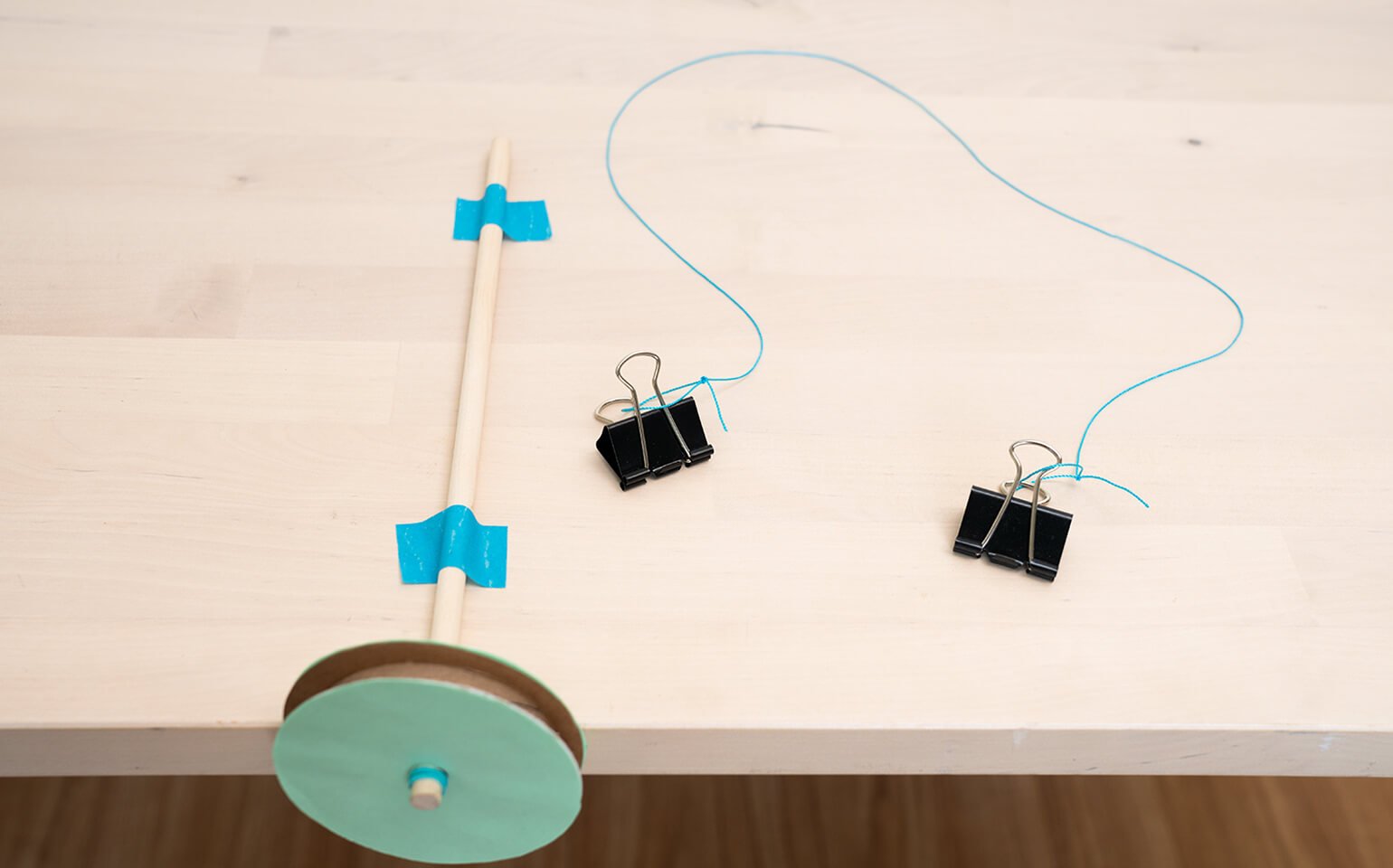

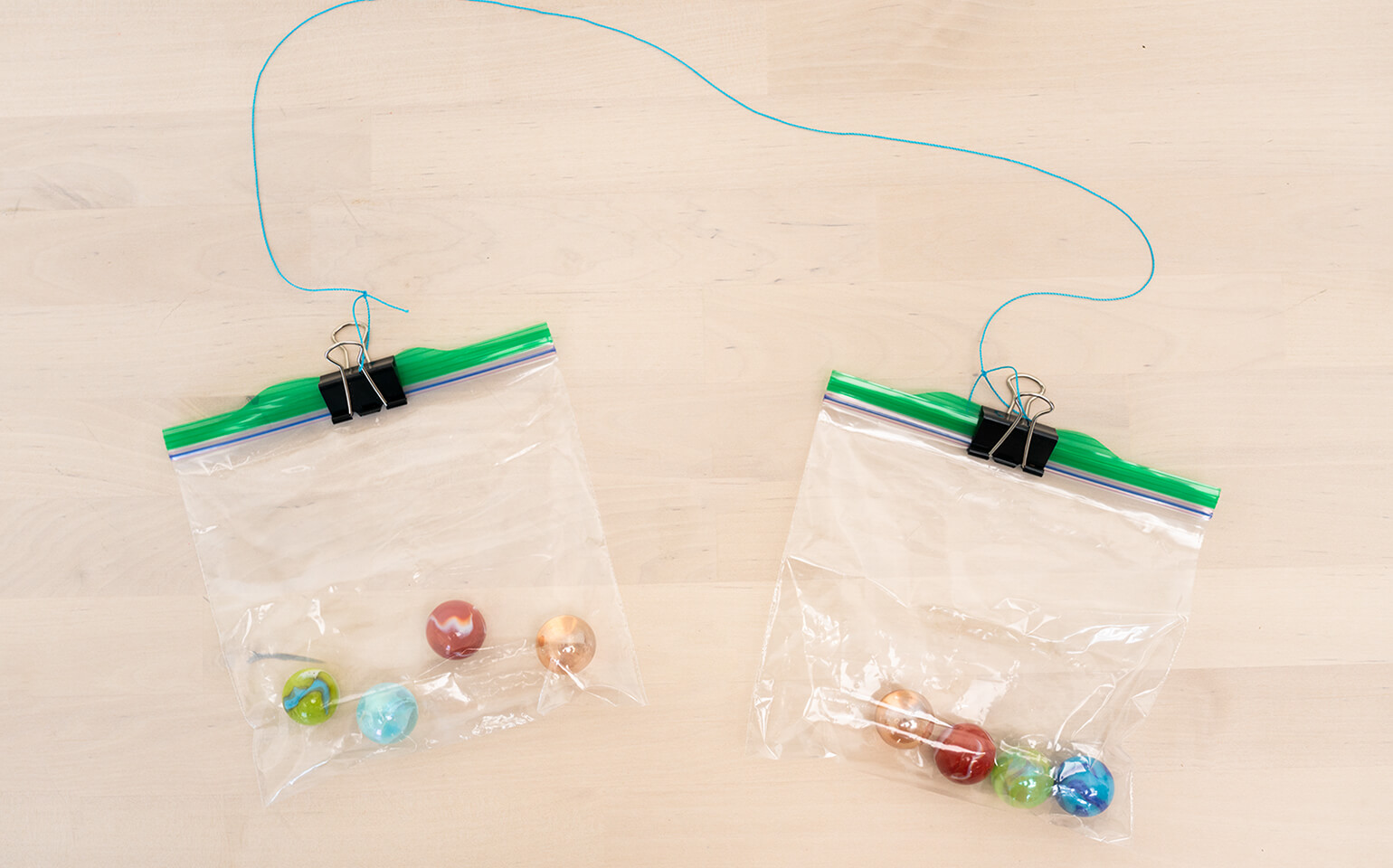








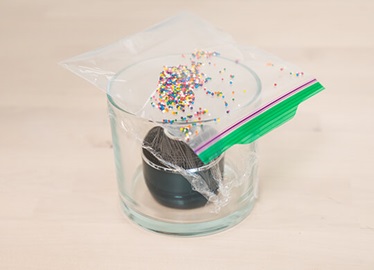

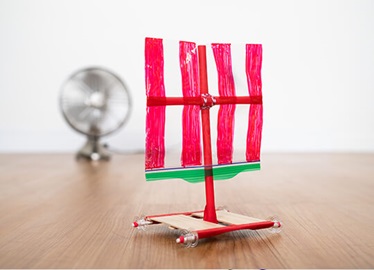
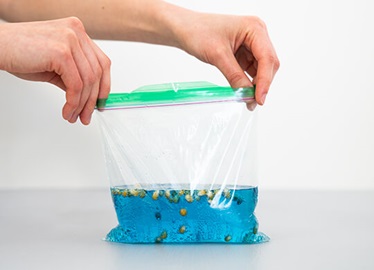

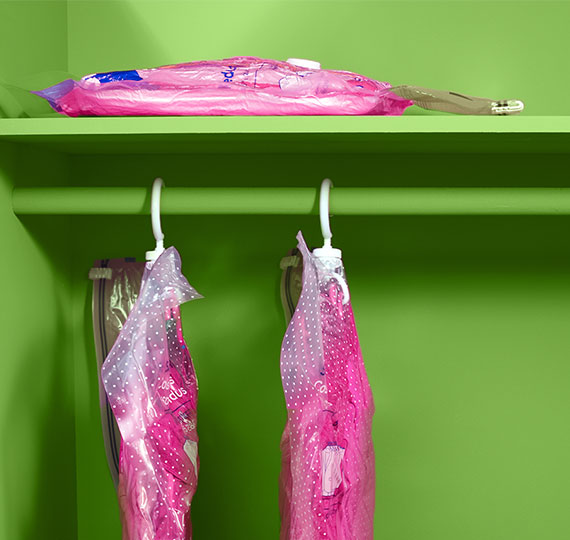
SHARE